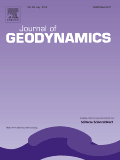
JOURNAL OF GEODYNAMICS
Scope & Guideline
Innovating Insights into Earth-Surface Processes and Geophysics
Introduction
Aims and Scopes
- Tectonic Processes and Dynamics:
The journal emphasizes research on tectonic processes, including plate tectonics, fault dynamics, and crustal deformation, contributing to the understanding of earthquakes and volcanic activity. - Geophysical Investigations:
Focus on various geophysical methods, including seismic, gravimetric, and magnetotelluric studies, to analyze subsurface structures and dynamics. - Geochemical and Petrological Studies:
Incorporates studies on the geochemistry and petrology of rocks to infer the conditions of formation and alteration processes, particularly in relation to tectonic settings. - Numerical Modelling and Simulation:
Utilizes advanced numerical simulations to model geological processes, aiding in the prediction of tectonic events and understanding of dynamic Earth processes. - Interdisciplinary Approaches:
Encourages interdisciplinary research that combines geology, geophysics, geochemistry, and other fields to provide a holistic view of geodynamic processes.
Trending and Emerging
- Artificial Intelligence in Geoscience:
Recent publications highlight the integration of artificial intelligence for predicting tectonic events and analyzing geophysical data, representing a significant trend in utilizing advanced computational techniques in geoscience. - Seismic Anisotropy Studies:
There is an increasing focus on seismic anisotropy and its implications for understanding crustal and mantle dynamics, showing a trend towards more nuanced interpretations of seismic data. - Impact of Climate on Geological Processes:
Research exploring the interaction between climatic factors and geological processes is emerging, indicating a recognition of the influence of environmental changes on tectonic activity. - High-Resolution Geophysical Imaging:
The trend towards high-resolution imaging techniques in geophysical studies is evident, as researchers seek to obtain more detailed insights into subsurface structures and dynamics. - Geodynamics of Subduction Zones:
An increasing number of studies are focusing on the complex geodynamic processes within subduction zones, reflecting a growing interest in understanding these critical areas of tectonic activity.
Declining or Waning
- Traditional Seismology:
There is a noticeable decrease in studies focused solely on traditional seismology without integration of modern geophysical techniques, suggesting a shift towards more comprehensive approaches that incorporate various methodologies. - Long-Term Geological History Studies:
Research centered exclusively on long-term geological history and stratigraphy appears to be waning, as the journal shifts towards more dynamic, real-time geophysical investigations. - Static Geological Models:
The use of static geological models is declining, indicating a trend towards dynamic modeling that better captures the complexities of tectonic processes and real-time changes.
Similar Journals
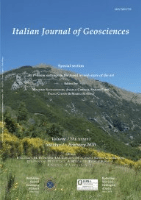
Italian Journal of Geosciences
Transforming Knowledge: Open Access to Earth Science BreakthroughsItalian Journal of Geosciences, published by the Società Geologica Italiana, is a distinguished platform for the dissemination of research in the fields of Earth and Planetary Sciences and Geology. With an impressive impact factor reflected in its 2023 rankings, where it placed in the Q3 category across its related fields, this journal serves as a vital resource for academics, practitioners, and students. Established in 2010 and poised to continue until 2024, the journal showcases critical advancements and interdisciplinary studies that deepen our understanding of geological processes and Earth systems. Operating under open access options, it offers robust accessibility to a broad audience, facilitating wider dissemination of knowledge. The journal's affiliation with Università degli Studi La Sapienza in Rome, Italy, further underscores its commitment to academic excellence and innovation in geosciences.
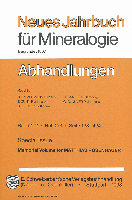
NEUES JAHRBUCH FUR MINERALOGIE-ABHANDLUNGEN
Elevating the discourse in petrology and mineralogy.NEUES JAHRBUCH FUR MINERALOGIE-ABHANDLUNGEN, published by E Schweizerbart'sche Verlagsbuchhandlung in Germany, is a distinguished scholarly journal dedicated to advancing the fields of mineralogy and petrology. With an ISSN of 0077-7757, it provides a platform for researchers to disseminate high-quality findings that contribute to our understanding of Earth sciences. Although it currently has no open access options, the journal remains vital for professionals seeking to engage with impactful research in geochemistry and petrology, as reflected in its 2023 Scopus ranking in the 21st percentile within its category. The journal has documented significant research from 1980 to 1988 and resumed from 1996 to 2023, making it a crucial archive for historical and contemporary studies. Despite its current Q4 quartile ranking, NEUES JAHRBUCH FUR MINERALOGIE-ABHANDLUNGEN is an important contributor to the academic discourse in its field, and it invites researchers, professionals, and students alike to explore and submit their work that drives innovation and understanding in mineralogical studies.
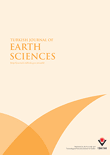
TURKISH JOURNAL OF EARTH SCIENCES
Unveiling the Secrets of Our PlanetTURKISH JOURNAL OF EARTH SCIENCES, published by the Tubitak Scientific & Technological Research Council Turkey, is a premier platform dedicated to advancing the field of Earth and Planetary Sciences. With an ISSN of 1300-0985, this journal has been a significant contributor to the international scientific community since its inception in 2002, and is set to continue publishing groundbreaking research through 2024. As a recognized journal in the Q2 quartile of Earth and Planetary Sciences, it ranks #98 out of 195 in its category according to Scopus metrics, positioning it within the 50th percentile of its field. The journal emphasizes peer-reviewed research, providing invaluable insights that facilitate scholarly discourse and promote rigorous investigation into various aspects of the Earth sciences. Although it does not currently offer open access, the journal remains a vital resource for academics, professionals, and students seeking to deepen their understanding of geological phenomena and contribute to the advancement of this essential discipline.

DOKLADY EARTH SCIENCES
Connecting Researchers to Contemporary Earth ChallengesDOKLADY EARTH SCIENCES is a reputable journal published by MAIK NAUKA/INTERPERIODICA/SPRINGER, focusing on the dynamic field of Earth and Planetary Sciences. With an ISSN of 1028-334X and E-ISSN 1531-8354, this journal offers a platform for researchers to disseminate their findings and insights that contribute to our understanding of Earth systems over a continuous publishing span from 1998 to 2024. It currently holds a Q3 quartile ranking in the Earth and Planetary Sciences category, reflecting an emerging yet significant impact within its field, evidenced by its Scopus ranks where it stands at 123rd in general Earth sciences and 113th in miscellaneous Earth sciences. DOKLADY EARTH SCIENCES aims to bridge research gaps and foster collaboration among a diverse audience including researchers, professionals, and students committed to advancing knowledge in geoscience. The journal stands as a vital resource for those seeking to explore contemporary challenges and innovations within the realm of Earth sciences.
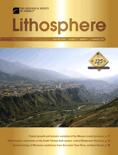
Lithosphere
Unveiling the Mysteries of Our Planet's Lithosphere.Lithosphere, published by GEOSCIENCEWORLD, is a premier open access journal that has been at the forefront of geological research since its inception. With the ISSN 1941-8264 and the E-ISSN 1947-4253, this journal serves as a vital resource for researchers, professionals, and students interested in Earth and planetary sciences, particularly in the field of geology. Its impressive ranking of Q2 in the 2023 category indicates its vital role in disseminating high-quality, impactful research. The journal’s commitment to open access since 2018 enhances its reach, providing global accessibility to cutting-edge studies that span a diverse range of geoscientific topics, from tectonics to sedimentology. With Scopus Rank #88 out of 321 in Earth and Planetary Sciences, it offers a strong platform for scholars to share their findings and engage with the latest advancements in the discipline. As the journal continues its convergence from 2009 to 2024, Lithosphere remains a crucial publication for those striving to deepen their understanding of Earth's systems.

IZVESTIYA-PHYSICS OF THE SOLID EARTH
Advancing Knowledge in Solid Earth PhysicsIZVESTIYA-PHYSICS OF THE SOLID EARTH, published by MAIK NAUKA/INTERPERIODICA/SPRINGER, serves as a pivotal platform in the field of Earth and Planetary Sciences as well as Environmental Science. With an ISSN of 1069-3513 and E-ISSN 1555-6506, the journal has been disseminating influential research since its inception in 1996, and continues to extend its contributions through 2024. Currently ranked in the Q3 category for both Earth and Planetary Sciences and Environmental Science, it showcases innovative studies that are crucial for understanding geological processes and their environmental implications. Located at 233 Spring St, New York, NY 10013-1578, the journal appeals to researchers, professionals, and students by providing insights and advancements that are at the forefront of these significant scientific disciplines. Although not open access, its rigorous peer-reviewed articles are essential reads for those aiming to deepen their knowledge and stay abreast of current trends and research in solid Earth physics.

JOURNAL OF GEOPHYSICAL RESEARCH-SOLID EARTH
Pioneering Research in Geophysics and BeyondJOURNAL OF GEOPHYSICAL RESEARCH-SOLID EARTH is a prestigious journal published by the American Geophysical Union, dedicated to advancing the study of solid Earth sciences. With an ISSN of 2169-9313 and E-ISSN of 2169-9356, it serves as a leading platform for rigorous research findings and innovative advancements within the fields of Earth and Planetary Sciences, Geochemistry and Petrology, Geophysics, and Space and Planetary Science. The journal has achieved an impressive Q1 quartile ranking across these categories, reflecting its high impact in the academic community and underscoring its role in influencing scientific discourse. Notably, it holds an esteemed position in Scopus, ranking 15th among 159 journals in Earth and Planetary Sciences (miscellaneous) as well as within the top 20 in several other geophysical domains. Researchers and practitioners are encouraged to contribute their work to this esteemed journal, which publishes comprehensive articles from 1979 to the present, thus providing a crucial repository of knowledge for those engaged in solid Earth research. Although it does not currently offer Open Access options, the journal's prestigious reputation ensures its articles reach a wide audience of academics, professionals, and students alike, fueling a deeper understanding of our planet's processes and challenges.

GEOTECTONICS
Pioneering Insights into Earth's Geological Processes.GEOTECTONICS is a distinguished academic journal published by PLEIADES PUBLISHING INC, focusing on key developments in the field of geology. Established in 1978, the journal has dedicated itself to exploring the intricate processes and phenomena associated with Earth's tectonic systems, making substantial contributions to Earth and Planetary Sciences. With an impressive impact factor reflected in its Q2 ranking within the Scopus category of Geology, GEOTECTONICS stands out as a valuable resource for researchers, professionals, and students alike. The journal offers a platform for rigorous peer-reviewed research that spans both fundamental theories and practical applications in geosciences, affirming its significance in fostering academic discourse and advancing geological knowledge. Although it currently does not offer open access, the journal's accessible format and continued publication through to 2024 ensures that it remains at the forefront of geoscientific inquiry.
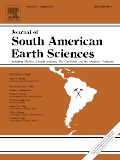
JOURNAL OF SOUTH AMERICAN EARTH SCIENCES
Unveiling Earth's Secrets Through South American LensesJOURNAL OF SOUTH AMERICAN EARTH SCIENCES is a premier interdisciplinary journal dedicated to publishing high-quality research in the fields of Earth-Surface Processes, Geology, and Paleontology, making it an essential resource for scientists and researchers focused on South American geology and its diverse geological phenomena. Published by Pergamon-Elsevier Science Ltd in the United Kingdom, this journal has been instrumental in disseminating groundbreaking studies since 1988, showcasing contributions that push the boundaries of knowledge in Earth and Planetary Sciences. With an impressive Scopus ranking—positioning it in the 74th percentile for Paleontology and 71st for Geology—this journal not only reflects robust academic quality but also its commitment to addressing critical geological challenges in South America. Researchers will appreciate its objective of advancing understanding of geological processes while providing insights into past, present, and future Earth environments. Although available through traditional subscription models, the journal's vast repository of articles enriches the academic landscape, facilitating the sharing of vital research among professionals, students, and geological practitioners.

ISLAND ARC
Connecting Scholars Through Geological DiscoveriesISLAND ARC is a prestigious journal dedicated to the field of Geology, published by WILEY. With a strong focus on the geology of island arcs and other related research, it serves as a vital resource for scholars, professionals, and students interested in earth and planetary sciences. The journal, which has been in circulation since 1992, is indexed in Scopus and holds a commendable Q2 ranking in its category for 2023, indicating its significant impact within the geological community. The journal’s ISSN is 1038-4871 and its E-ISSN is 1440-1738. Although it does not currently offer open access, it remains a crucial platform for disseminating high-quality research relevant to geological phenomena, promoting interdisciplinary collaborations and advancing our understanding of geological processes. With an address in Hoboken, New Jersey, ISLAND ARC continues to enhance its global influence and scholarly contributions through rigorous peer review and a commitment to excellence.